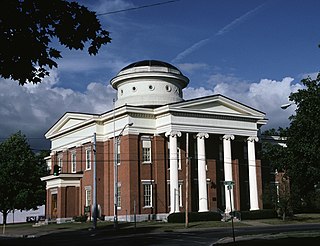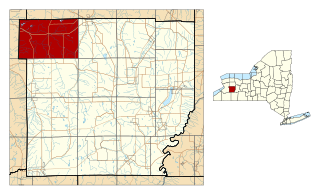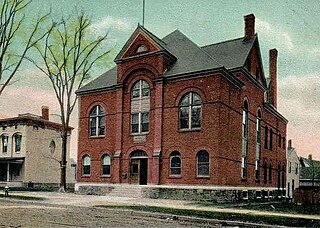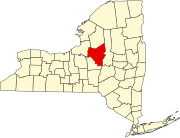
Oneida County is a county in the state of New York, United States. As of February 26, 2024, the population was 226,654. The county seat is Utica. The name is in honor of the Oneida, one of the Five Nations of the Iroquois League or Haudenosaunee, which had long occupied this territory at the time of European encounter and colonization. The federally recognized Oneida Indian Nation has had a reservation in the region since the late 18th century, after the American Revolutionary War.

Russia is a town in Herkimer County, New York, United States. The population was 2,269 at the 2020 census, down from 2,587 in 2010. The town is located in the northwestern part of the county and is northeast of Utica.

Schuyler is a town in Herkimer County, New York, United States. The population was 3,420 at the 2010 census. The town is in the western part of Herkimer County and is east of Utica.

Annsville is a town in Oneida County, New York, United States. At the 2010 census the town population was 3,012. The town is named after Ann Bloomfield, wife of a founder.

Ava is a town in Oneida County, New York, United States. The population was 678 at the 2010 census..
Clark Mills is a hamlet in Oneida County, New York, United States. The population was 1,905 at the 2010 census.

Clinton is a village in Oneida County, New York, United States. The population was 1,942 at the 2010 census, declining to 1,683 in the 2020 census 13% decline). It was named for George Clinton, the first Governor of New York.

Deerfield is a town in Oneida County, New York, United States. The population was 4,273 at the 2010 census.

Kirkland is a town in Oneida County, New York, United States. The population was 10,075 at the 2020 census. The town is named after Samuel Kirkland, a missionary among the Oneidas.

Marshall is a town in Oneida County, New York, United States. The population was 2,131 at the 2010 census.

Oriskany Falls is a village in Oneida County, New York, United States. The population was 732 at the 2010 census. The name is derived from a waterfall on a nearby stream.

Verona is a town in southwestern Oneida County, New York, United States. The population was 6,293 at the 2010 census. The town was named after Verona, Italy.

Waterville is a village in Oneida County, New York, United States. According to the 2010 census, its population was 1,583.

Whitestown is a town in Oneida County, New York, United States. The population was 18,667 at the 2010 census. The name is derived from Judge Hugh White, an early settler. The town is immediately west of Utica and the New York State Thruway passes across the town. The offices of the town of Whitestown are in the Village of Whitesboro.

Albion is a town in the northeastern part of Oswego County, New York, United States. The population was 2,009 at the 2020 census.

Hastings is a town in Oswego County, New York, United States. Its population was 9,450 at the 2010 census. It is named after Hastings Curtiss, a prominent citizen and member of the State Assembly in 1824.

Bennington is a town in Wyoming County, New York, United States. The population was 3,235 during the 2020 census. The town was named after Bennington, Vermont.

New Hartford is a town in Oneida County, New York, United States. As of the 2020 census, the town population was 21,874. The name of New Hartford was provided by a settler family from Hartford, Connecticut.

Remsen is a town in Oneida County, New York, United States. The population was 1,929 at the 2010 census. The town is named after Henry Remsen, an early settler. The Town of Remsen contains a village also named Remsen. The town is north of the city of Utica.

The Utica–Rome Metropolitan Statistical Area, as defined by the United States Census Bureau, is an area consisting of two counties in Central New York anchored by the cities of Utica and Rome. As of the 2020 census, the MSA had a population of 292,264.





















